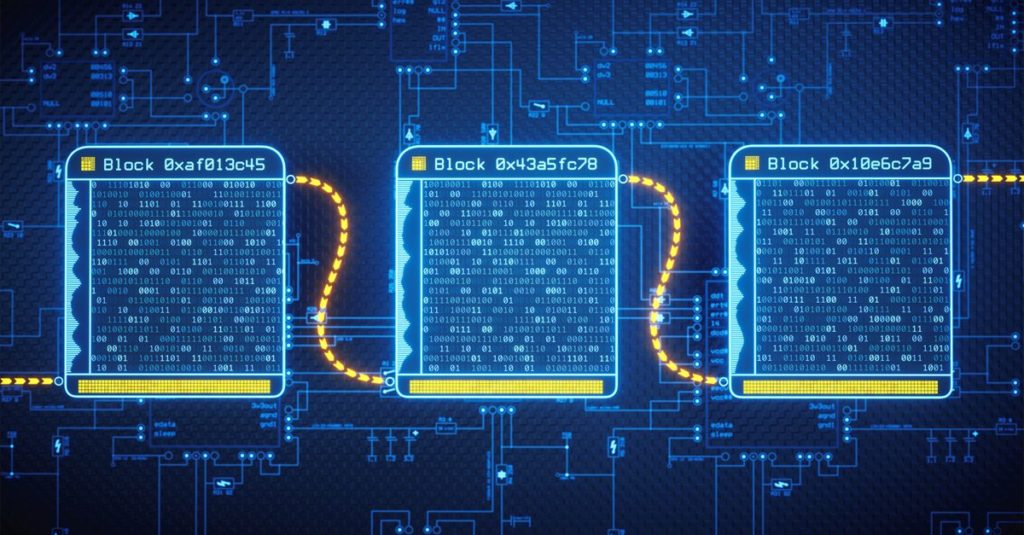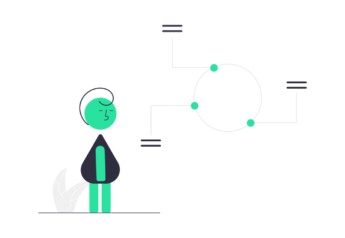Table of Contents
Web3 is the next generation of the internet, focusing on shifting power away from large tech companies and toward individual users.
The Rift Across Web3

A debate in Silicon Valley about the future of the internet disrupted the week before Christmas. Prominent tech founders and venture capitalists (VCs) debated the meaning and implications of Web3, a hazy concept implying a possible utopian vision of a decentralized internet and the new opportunities that could be created by emerging technologies such as blockchain.
On December 20, Tesla CEO Elon Musk tweeted, “Has anyone seen Web3?” I can’t seem to find it.”
Jack Dorsey, the former CEO of Twitter, replied, “It’s between a and z.” Although Dorsey did not elaborate on the meaning of his tweet, he clearly alluded to Andreesen Horowitz, one of Silicon Valley’s most prominent venture capital firms founded by (another) tech visionary Marc Andreesen (co-founder of Netscape, the pioneering web browser that delivered on promises like “the web is for everyone”).
The next day, Jack Dorsey tweeted another provocative idea. This time, the warning loudly says, “You do not own “Web3.” The venture capitalists and their limited partners do. It will never escape their grasp. Finally, it is a centralized entity under a different label. Know what you’re getting yourself into…”
Dorsey’s remark sparked heated debate online, with thousands of responses, particularly in the Silicon Valley community.
The schism then became personal. Dorsey announced on December 22 that he was “officially banned from Web3” and reposted a screenshot of a Twitter page showing that Marc Andreesen had blocked Dorsey from following him.
To provide some context, Andreesen Horowitz confirmed their commitment to crypto in July 2021 by announcing the launch of their $2.2 billion Crypto III fund to pursue investments in blockchain-driven technologies.
So, where is Web3 “between a and z”? What exactly is Web3? And why do definitions matter in the first place (especially for lawyers)?
Why Does Web3 Matter?

Blockchain and decentralized ledger technologies provide some powerful functionalities that may be relevant to the operation of intellectual property rights. More specifically, blockchain technologies enable the addition of digital timestamps to creative works and the tracking of subsequent owners.
Furthermore, creators can use smart contracts to ensure that a certain percentage of the sales price is paid to the original creator each time the work is resold.
Blockchains shine when two very specific criteria are met: the system must be decentralized, and participants must be adversarial. The majority of candidates fail the first criterion. If multiple organizations or people require a shared system, establishing a third-party administrative governing body with an API and structured query language (SQL) database is usually sufficient, with vastly improved efficiency and reliability.

Even if a system must be decentralized, if the participants trust each other, a blockchain is unnecessary; instead, a consensus algorithm is required.
Creating a non-governmental currency governed solely by code, such as Bitcoin, is an excellent application. It must be decentralized, or else any government can control or put pressure on whomever they want. Furthermore, when money is at stake, many participants have an incentive to defraud the system or others in the industry.
Another great use case is to create a decentralized finance application (basically a savings account and lending platform) with no minimum deposits, account freezes, or signup requirements.
Web3 is More than Just Blockchain

It’s no surprise that the future of the internet has sparked so much debate and disagreement. Governments and consumers are currently dealing with the consequences of incumbent tech giants building digital platforms and establishing vast monopolies based on their apparent total control of big data.
At the same time, tech visionaries, innovators, and venture capitalists are looking ahead to the next set of technologies that will shape how information and resources are used in the future.
The debate over Web3 is centered on distributed ledger technologies (blockchain) and the concept of decentralization. “High-performance programmable blockchains will be able to make the decentralized network development easily accessible around the world,” according to some venture capitalists.
Blockchains are already powering initiatives to decentralize finance and creative industries (Bitcoins and NFTs), and they are likely to provide valuable features to other sectors of the economy in the future. Decentralized autonomous organizations (DAOs), for example, enable organizations to be flatter, more open, and purpose-driven.
However, from a historical standpoint, it is worth questioning whether Web3 should be uncritically equated with blockchain technologies, as the current consensus in the tech community appears to suggest.

Take, for example, Packy McCormick’s definition of Web3: “Web3 is the internet owned by the builders and users, orchestrated with tokens.” According to this viewpoint, blockchain-backed tokens are a defining, constitutive component of this nascent infrastructure.
Is the current consensus, however, correct? One of the main reasons the internet is such a powerful “invention” is that it is primarily software-based, allowing for the creation of new networks on top of it. Web1 and Web2 were not technologies, but rather a set of network-layer communication protocols.
Of course, blockchain could emerge as a defining technological solution to the widespread distribution of ownership, but Web3 cannot and should not be reduced to blockchain when the true shift is toward user ownership of digital assets.
Recognizing blockchain’s significance and value while excluding it from any definition of Web3 seems prudent. After all, blockchain is just a “method to verify ownership” — a decentralized ledger — for assets that exist outside of the blockchain, i.e., off-chain. Of course, a blockchain can be extremely effective at verifying asset ownership in a scalable manner, but this does not mean that it (blockchain) should be equated with Web3.
So Where are We?

The majority of the apps you use are still Web2. The vast majority of dapps available are purely financial in nature, such as trading crypto or buying and selling NFTs. But we’re getting there, and Web3 is already making inroads into major industries such as music, video streaming, and even gaming.
Web3 may currently appear to be inaccessible, and when buzzword tweets go viral, it reinforces the narrative that the decentralized web is only for those in the know. But Web2 was the same way. Thousands of people are working tirelessly to make this space more accessible to all, and you’ll soon be using Web3 apps without even realizing it.
It’s incredibly simple to begin your own Web3 journey, and you can get started right away by installing Metamask, a browser extension that makes your browser compatible with blockchain apps.
Disclaimer: The opinion expressed here is not investment advice – it is provided for informational purposes only. It does not necessarily reflect the opinion of EGG Finance. Every investment and all trading involves risk, so you should always perform your own research prior to making decisions. We do not recommend investing money you cannot afford to lose.
 English
English Français
Français Español
Español Bahasa Indonesia
Bahasa Indonesia 中文 (中国)
中文 (中国) Русский
Русский Português
Português Deutsch
Deutsch

